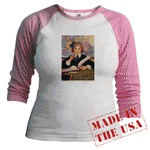| Introduction | Annotated Tales | eBooks | Bookstore | Illustration Gallery | Discussion Board | Blog |
 |
|
|
Mally Dixon and Knurre-Murre Return to Popular Rhymes and Nursery Tales by James Orchard Halliwell This analysis of the Danish tale is taken from an article in the Quarterly Review, xxi. 98. STORIES of fairies appearing in the shape of cats are common in the North of England. Mr. Longstaffe relates that a farmer of Staindrop, in Durham, was one night crossing a bridge, when a cat jumped out, stood before him, and looking him full in the face, said:
The farmer returned home, and in mickle wonder recited this awfu' stanza to his wife, when up started their black cat, saying, "Is she?" and disappeared for ever. It was supposed she was a fairy in disguise, who thus went to attend a sister's funeral, for in the North fairies do die, and green shady spots are pointed out by the country folks as the cemeteries of the tiny people. An analogous story is found in the people-literature of Denmark. Near a town called Lyng is the hill of Brondhoë, inhabited by the trold-folk, or imps. Amongst these trolds was an old sickly devil, peevish and ill-tempered, because he was married to a young wife. This unhappy trold often set the rest by the ears, so they nicknamed him Knurre-Murre, or Rumble-Grumble. Now it came to pass, that Knurre-Murre discovered that his young wife was inclined to honour him with a supplemental pair of horns; and the object of his jealousy, to avoid his vengeance, was compelled to fly for his life from the cavern, and take refuge, in the shape of a tortoise-shell cat, in the house of Goodman Platt, who harboured him with much hospitality, let him lie on the great wicker chair, and fed him twice a day with bread and milk out of a red earthenware pipkin. One evening the goodman came home, at a late hour, full of wonderment. "Goody," exclaimed he to his wife, "as I was passing by Brondoë, there came out a trold, who spake to me, saying,
The tortoise-shell cat was lying on the great wicker chair, and eating his supper of bread and milk out of the red earthenware pipkin, when the goodman came in; but as soon as the message was delivered, he jumped bolt upright upon his two hind legs, for all the world like a Christian, and kicking the red earthenware pipkin and the rest of the bread and milk before him, he whisked through the cottage door, mewing, "What! is Knurre-Murre dead? then I may go home again!" Halliwell, James Orchard. Popular Rhymes and Nursery Tales. London: John Russell Smith, 1849. Return to Popular Rhymes and Nursery Tales by James Orchard Halliwell |
|
| ©Heidi
Anne Heiner, SurLaLune Fairy Tales E-mail: heidi@surlalunefairytales.com Page created 10/25/07; Last updated 10/25/07 www.surlalunefairytales.com |













